Some people say that Samba was born in Bahia, others in Rio de Janeiro. However, there is no doubt that it was in Rio that the musical genre chose to live.
The city has not only consolidated itself as the main destination for those who want to listen, sing and dance samba, but also has earned the status of “Samba World Capital”.
Therefore, we present below a brief history about the musical genre that celebrated 100 years in 2016 and is all over the city not only during Carnival, but throughout the year, every day of the week.
How was the samba Carioca born?
In the mid-nineteenth century, in the port district of Rio de Janeiro, between the neighborhood of Saúde and Gamboa, the first Afro-Brazilian communities emerged. It was this region of Rio that received the Africans brought by the Portuguese to be sold as slaves. As a result of the end of the slave trade in the country, they started to erect their humble houses, originating the first slams.
It was then in this region, which became known as “Little Africa” that various artistic and cultural movements of African roots emerged. Because the artists of the time were marginalize and forbidden to show their art in public, they sought refuge in the houses of the “Tias Baianas” (Aunts from Bahia). They were women who made their living by selling their food or with sewing services. In these houses, they had the celebrations of their religions (Candomblé and, later, Umbanda). It was then, from the Maxixe and other references of African rhythms, when the first samba circles appeared.
It was at one of these meetings at Tia Ciata`s home (the most famous and important “aunt from Bahia”) that in 1916 the musician Ernesto dos Santos, better known as Donga, composed with other musicians the song `Pelo Telefone`. The song was after registered and recorded as the first samba of Brazil.
The first school of samba
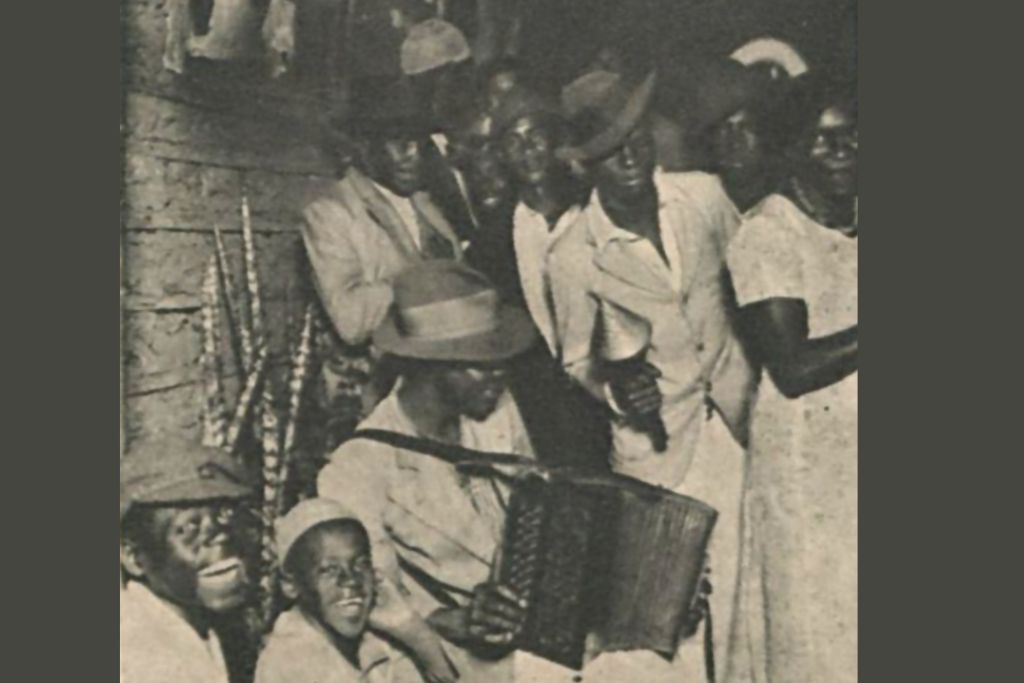
At the end of the 1920s, the samba Carioca went through a second and final phase. In Estácio neighborhood, near Praça Onze (Onze Square), a new generation of artists emerged, such as Ismael Silva, Bide, Nilton Bastos and other musicians who changed the way of composing and playing samba. They added new instruments, such as the ‘surdo’ and the tambourine, and altered the rhythm of the samba, making it faster and with a drumbeat. They also inaugurated the first samba school in Brazil, the “Deixa Falar” in 1928.
The first parades of the samba schools were held at Praça Onze and were later moved to the Marquês de Sapucaí Sambadrome where it is held to this day. The parade occurs for 5 consecutive days, and it is considered the largest Carnival in the world by The Guinness Book of Records.
The 'rodas de samba' (samba circle)
However, there is a lot of samba in Rio de Janeiro outside the Marquês de Sapucaí.
The gatherings or shows of samba, are popularly called ‘roda de samba’ (samba circle).
The musicians sing and play the instruments seated around a table, forming a circle. The audience then, stands around this circle singing, clapping and dancing to he rhythm of the music.
A great samba singer from Rio de Janeiro, Luiz Carlos da Vila, once said: “The best invention of the man after the wheel, was the samba wheel (circle).” and we totally agree!
A Guide for enjoying Samba in Rio - where to find samba circles from Monday to Sunday
The evidence that samba is Rio’s most significant cultural manifestation is the possibility of finding a good samba show every day of the week, spread throughout the city.
As the traditional samba singer Zé Keti sang in the samba ‘A voz do morro’:
“I am the samba, born in Rio de Janeiro, I am the one who brings joy to millions of Brazilian hearts.”
–> Listen to this and other samba songs in our playlist Samba Carioca on Spotify.
Not only are the Brazilian (and Cariocas) hearts infected by the joy of samba, but also the thousands of tourists visiting the city.
As such, we prepared a guide with the best local samba circles you need to know.
Mondays
Who said Monday is not a good day to enjoy samba? On Mondays, the city’s two main and most traditional samba circles take place: the samba do trabalhador, and the samba circle of Pedra do Sal.
The samba do trabalhador (Worker’s samba) is performed at the Clube Renascença in the neighborhood of Andaraí every Monday from 5:30 pm, rain or shine. The samba circle is led by the musician Moacyr Luz and a new generation of samba players such as Gabriel Cavalcante and Nego Álvaro. The group has won several national awards, including the Brazilian Music Award for the best Samba group.
The traditional Roda de Samba da Pedra do Sal (Samba circle of Salt stone) is held at the bottom of Morro da Conceição, in the Saúde neighborhood, starting at 7 pm. The place has this name because it used to be where the enslaved people discharged the salt from Europe to the city. Recently, the area was declared a historical and religious monument of Rio de Janeiro due to its historical importance. (Warning: there’s no samba when it rains).

Carioca Tip:
Take the opportunity to learn about the history of the region known as Little Africa and behind the scenes of carnival with our History of Samba and Carnival Experience tour, and then enjoy Pedra do Sal samba circle.
* Samba do Trabalhador: Every Monday from 4:30 pm. Admission: R$ 20,00. Address: Renascença Clube – Rua Barão de São Francisco, 54, Andaraí.
* Samba of Pedra do Sal: Every Monday (When it`s not raining) from 7 pm. Admission: Free. Address: Rua Argemiro Bulcão – Largo João da Baiana, Saúde.
Tuesdays
Tuesdays are traditionally dedicated to choro at Beco do Rato, one of the leading samba houses in the city.
Samba-choro (or chorinho as the Cariocas like to call it) is a subgenre of samba, which in addition to string instruments, also includes wind instruments.
The house has a varied program every day of the week, which includes established savvy artists and new talents of Carioca samba. It has a decoration that pays homage to great names in the history of samba and its African origin.
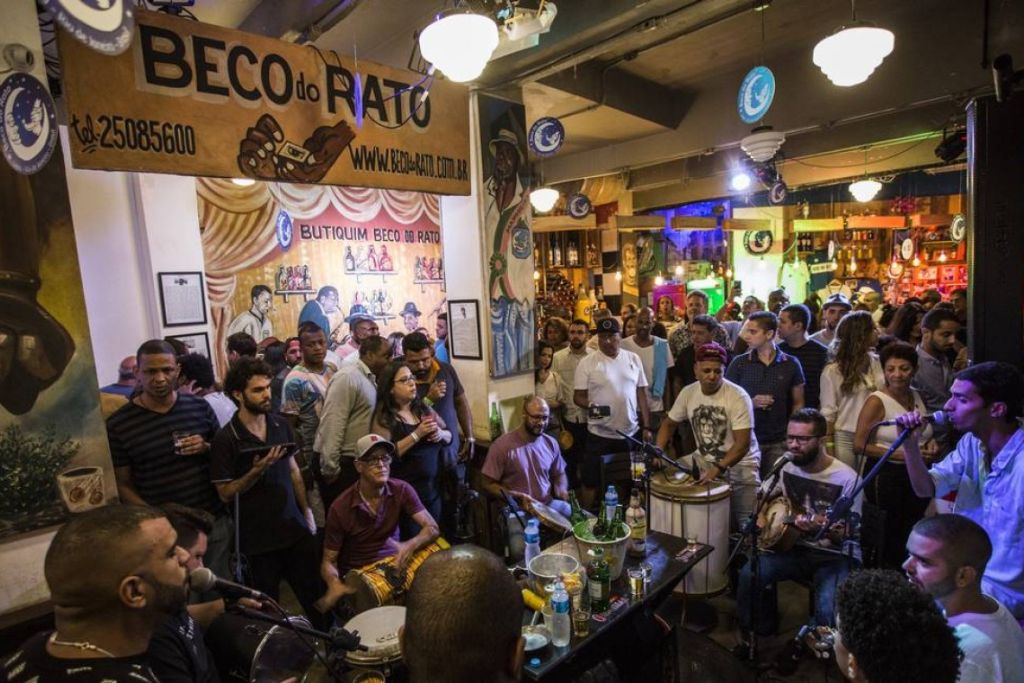

Carioca Tip:
Try the house’s traditional pastel de angu and order the cachaça Gabriela (Cachaça with honey, cloves, and cinnamon) to go with it.
* Beco do Rato: Open from Tuesday to Sunday (check the agenda at their website). Admission: Free on Tuesdays (May vary by event). Address: Rua Joaquim Silva 11, Lapa, Centro.
Wednesdays
In the heart of Lapa, the Carioca da Gema bar is considered one of the most traditional houses in the bohemian neighborhood. Its programming always includes concerts by big names in the genre, with competitive admission due to the size of the old mansion that was converted into a bar.
* Carioca da Gema: – Open from Thursday to Tuesday. (Check website). Admission: from R$ 20,00 (May vary according to the event).
Address: Av. Mem de Sá, 79 – Lapa, Centro.
Thursdays
On Thursdays, at the top of the bucolic and peaceful Morro do Pinto, in the port region of the city, the samba circle takes place that won the prize for the best samba circle in Rio in 2023: the samba from Bar do Omar.
Starting at 7:13 pm, the Sambarilove group opens its work on the effervescent terrace of the bar that became famous for its political position (from the left) stamped on all its walls.
It is a haven for those who enjoy a cold beer, good food, and drinks (try their bolinhos and drink their homemade passion fruit batida), and one of the most beautiful views of the city comes as a toast: a unique view of the port region.
However, if you want a more popular and upbeat atmosphere, samba independente dos bons costumes, is a good option. The group (of the same name) performs every Thursday at the Centro Cultural Fundição Progresso, behind the arches of Lapa.
Formed by Brazilian and foreign musicians (including an Argentinian), the group takes a tour of several Brazilian musical genres but always keeps samba as its central identity. In between shows, a DJ plays songs that make the young audience dance.
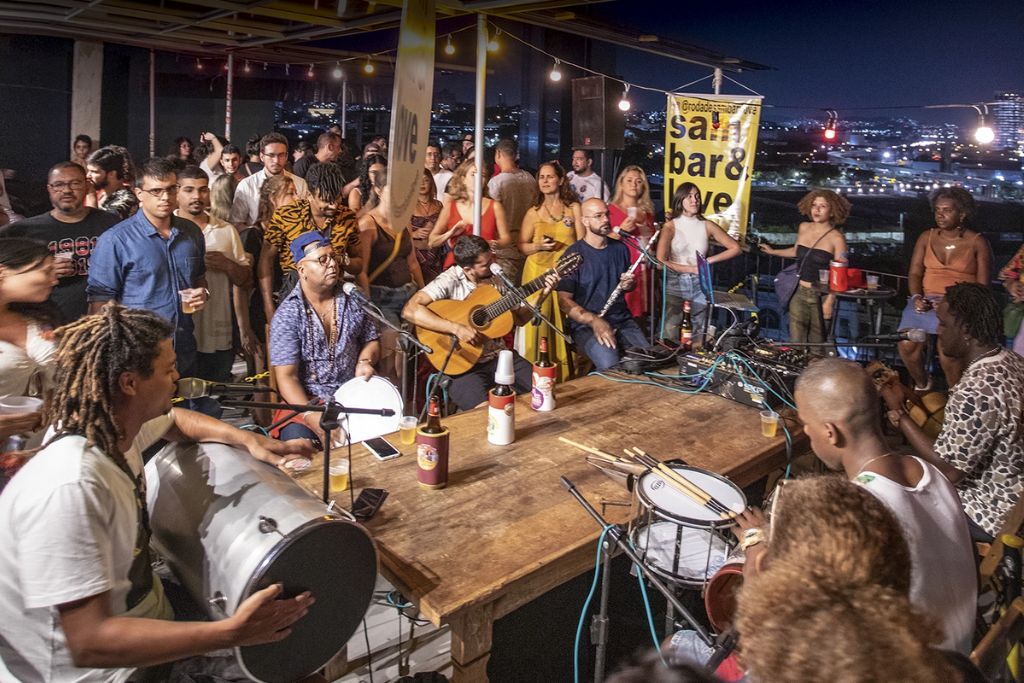
* Bar do Omar: open from Thursday to Sunday, from 5pm. Admission: Free. Address: Rua Sara, 114, Santo Cristo.
* SIBC – Samba independente dos bons costumes: every Thursday from 9 pm. Admission: from R$ 30,00. Address: Fundição Progresso Cultural Center, Espaço Annex – Rua dos Arcos, 24 – Lapa.
Fridays
In the port region of Rio, the Trapiche Gamboa house offers an excellent combination of samba circles like the ones from the old terreiros and good snacks typical of the national cuisine.
The 19th-century townhouse has a large hall and high ceilings, which houses a mezzanine and a third-floor balcony with a bar. The relaxed and sophisticated environment established the place as one of the most pleasant samba houses in the city.
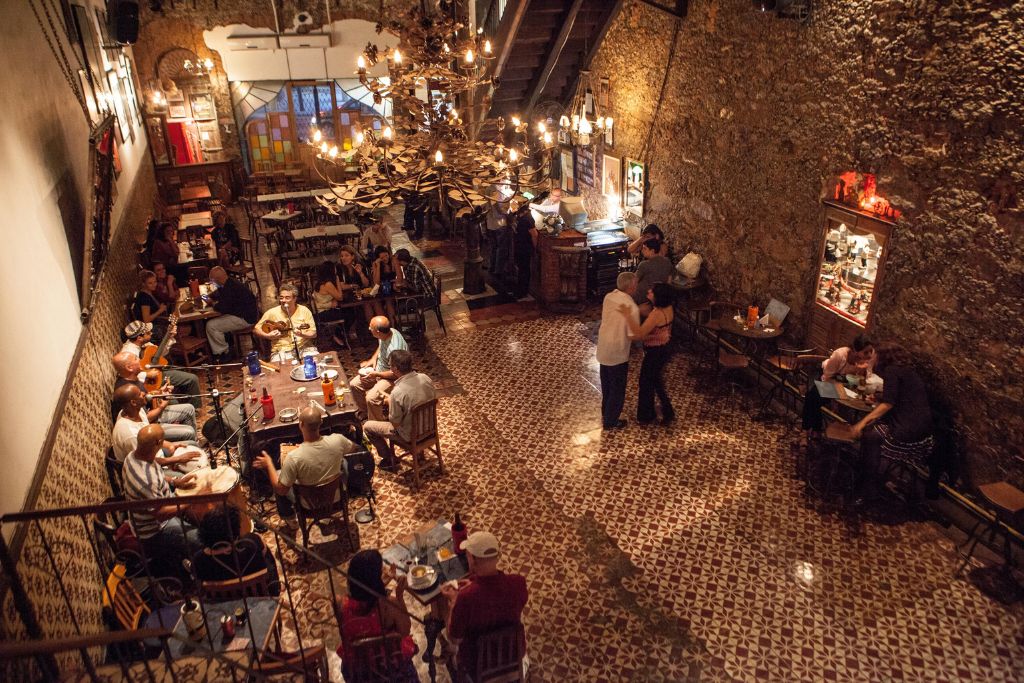
* Trapiche Gamboa: Open from Tuesday to Saturday (Check website). Admission: R$ 20,00 (May vary according to the event).
Address: Rua Sacadura Cabral, 155 – Saúde.
Saturday
There is a famous duo in Rio, and it traditionally happens on Saturdays: Feijoada + samba.
Feijoada is the national dish of Brazil and one of the 10 must-see attractions in Rio.
If you want to try the traditional dish and, of course, visit a Carioca samba school, the tip is to go to the feijoada at one of the samba schools in Rio de Janeiro. Several schools have the traditional school feijoada all year round in their schedule of events.
For example, the samba school G.R.E.S. Portela, the greatest champion of the Carioca Carnival, makes its traditional feijoada every first Saturday of the month from 1pm. In addition to enjoying the dish, you will also be able to check out the battery rehearsal and fall into the samba with your dancers.
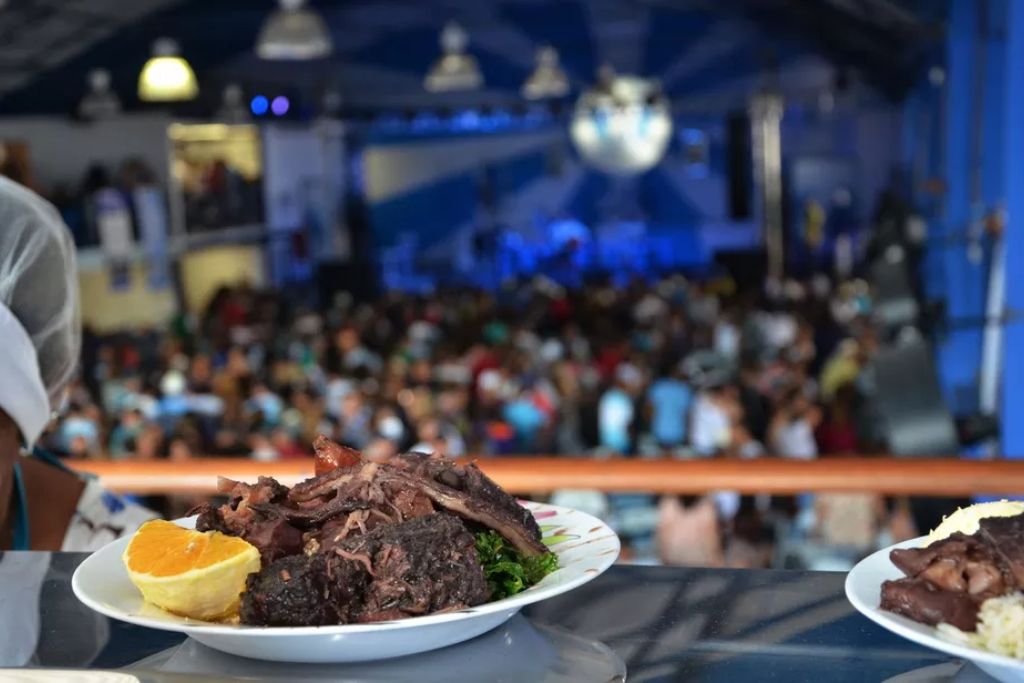
* Quadra do G.R.E.S.Portela: Admission: R$ 20,00 with feijoada included. Address: Rua Clara Nunes, 81 – Madureira.
Another option is Samba dos Guimarães, a samba in the famous bohemian neighborhood of Santa Teresa.
With a young audience and a relaxed atmosphere, different groups lead the circles every Saturday from 7 pm at the Casarão da Federation, also known as the Flea Market.

Carioca Tip:
It’s worth taking advantage of Saturday to stroll through the neighborhood’s streets during the day with our tour Lapa and Santa Teresa Walking Tour and end the night enjoying samba at the market in Largo dos Guimarães.
* Samba dos Guimarães: Every Saturday, according to the schedule published on the local social networks. Admission: from R$ 25,00 (May vary according to the event). Address: Rua Almirante Alexandrino 501 – Largo dos Guimarães, Santa Teresa.
Sunday
On Sundays, Bar Bip-Bip, considered a traditional bohemian stronghold in Copacabana, has samba circles starting at 8pm.
The circles tend to be crowded due to the space in the bar. The few tables and chairs are reserved for musicians, and there are no waiters serving – customers help themselves directly from the bar fridge.
To avoid interfering with the musicians and not making noise for neighbors, talking and clapping during the music is prohibited. Instead, regulars often snap their fingers. And even so, the bar has a captive clientele that will admire good roots music for over 50 years.
* Bar Bip-Bip: Samba on Thursdays and Sundays. Admission: Free.
Address: R. Alm. Gonçalves, 50 – Loja D – Copacabana.
Now that you know where to find a good Carioca samba circle in Rio de Janeiro, what are you waiting for to enjoy samba, the liveliest and Carioca rhythm in Brazil?
After all, as the song `Samba da minha terra` from the musician Dorival Caymmi says:
“Who doesn’t like samba is not a good guy, either has sick feet or is out of mind.”
Want to enjoy the best samba circles in Rio in the company of a local? Book our tour Local Samba Circle and Botequim Experience.
Did you like our guide? How about having a custom itinerary including these and other attractions that only the locals know? Access this link and request your custom itinerary.
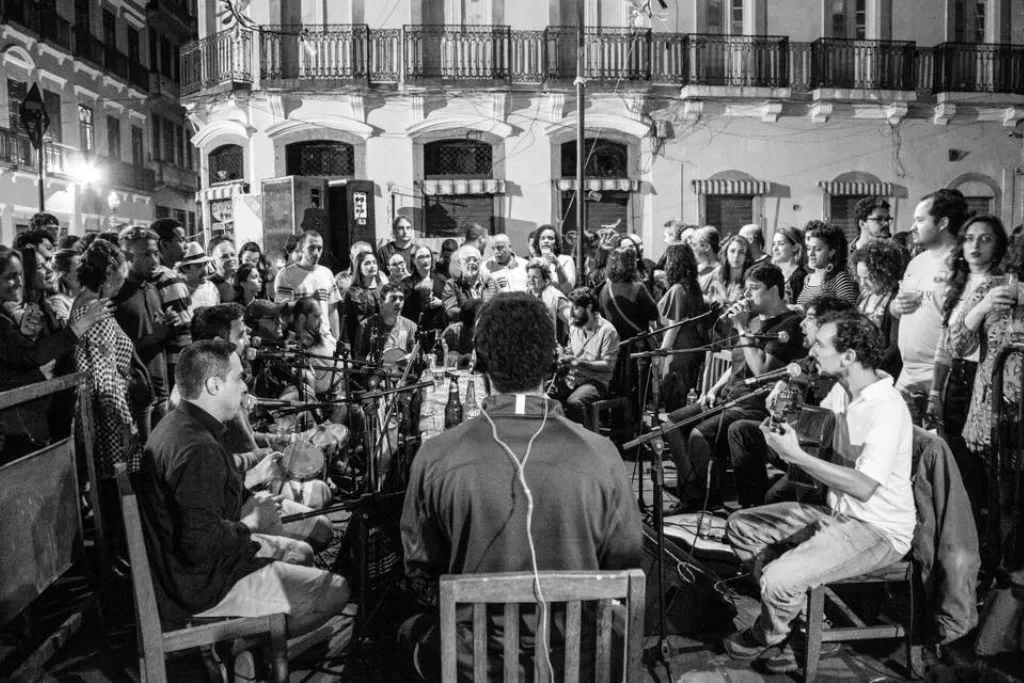
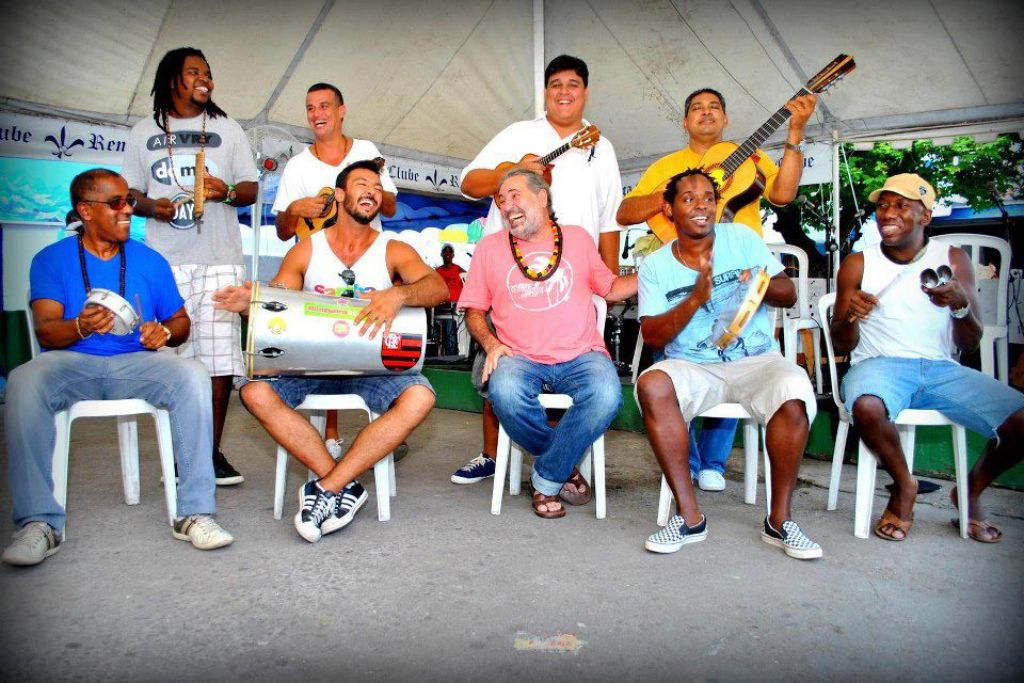

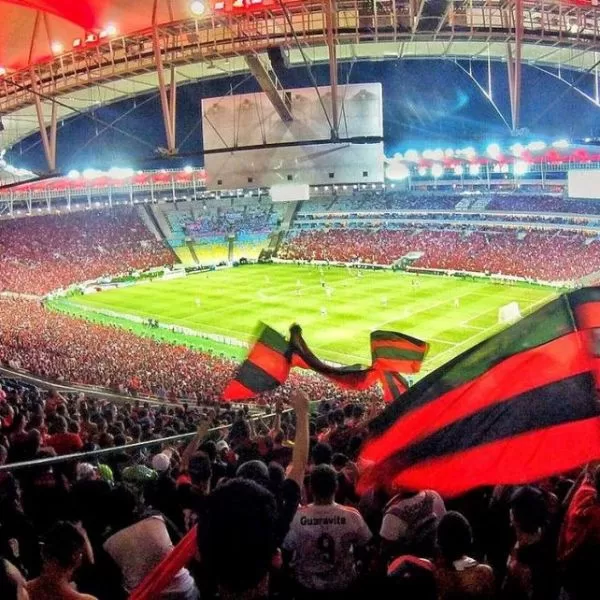
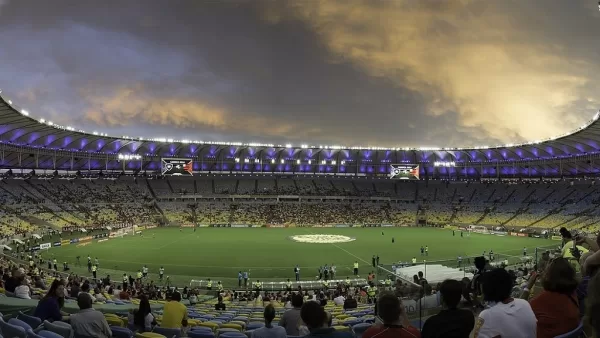
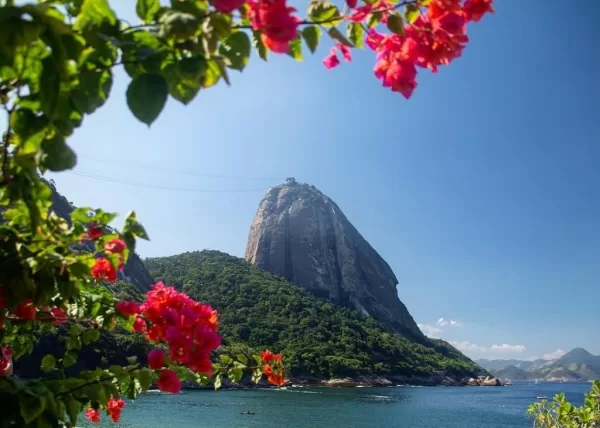
Pingback: Top 10 things to see and do in Lapa | Rio de Janeiro by Cariocas
Pingback: 10 unmissable things to do in Rio de Janeiro | Rio de Janeiro by Cariocas
Pingback: Comida di Buteco: food and culture at a traditional contest 2023
Pingback: 8 must-visit museums in Rio de Janeiro | Rio de Janeiro by Cariocas
Pingback: O que fazer no Rio: Top 10 atrações | Rio de Janeiro by Cariocas
This amazing post show us exactly what we have to know about this beautiful and fantastic musical genre. Well written and very important to all of us. Congratulations, riobycariocas.🏆😘
Thank you Rodrigo! We are glad you enjoyed! 🙂